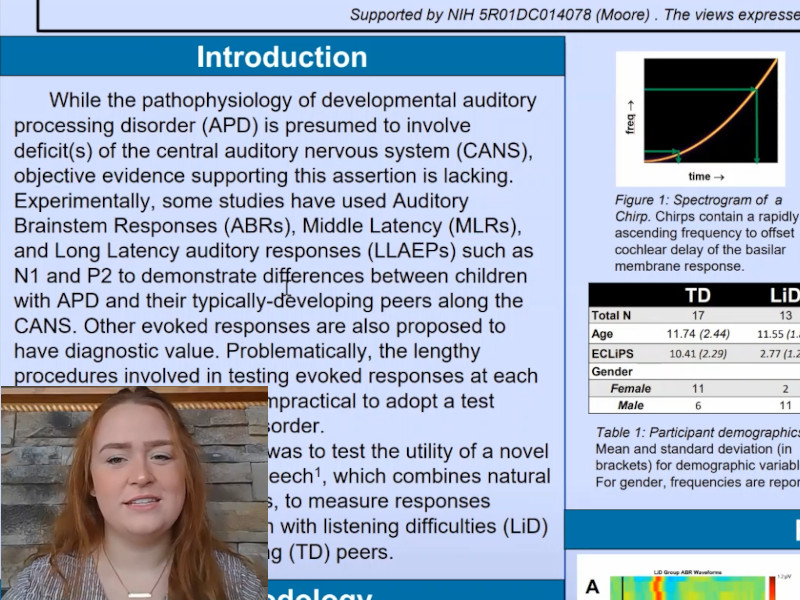
Project Information
- Category: Poster
- Conference: 48th Annual Scientific and Technology Conference of the American Auditory Society (Virtual)
- Authors: Taylor R. Wicks, Chelsea M. Blankenship, Lee M. Miller, David R. Moore, Lauren Petley
Investigating Listening Difficulties in Children Using Chirp Speech EEG
While the pathophysiology of developmental auditory processing disorder (APD) is presumed to involve deficit(s) of the central auditory nervous system (CANS), objective evidence supporting this assertion is lacking. Experimentally, some studies have used Auditory Brainstem Responses (ABRs), Middle Latency (MLRs), and Long Latency auditory responses (LLAEPs) such as N1 and P2 to demonstrate differences between children with APD and their typically-developing peers along the CANS. Other evoked responses are also proposed to have diagnostic value. Problematically, the lengthy procedures involved in testing evoked responses at each level of the CANS make it impractical to adopt a test battery approach for this disorder.
The goal of this project was to test the utility of a novel protocol known as Chirp Speech, which combines natural speech with synthetic chirps, to measure responses across the CANS in children with listening difficulties (LiD) and their typically-developing (TD) peers.